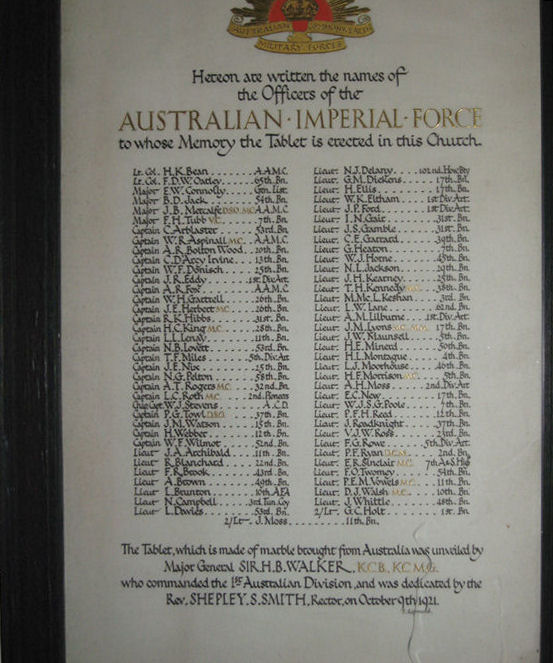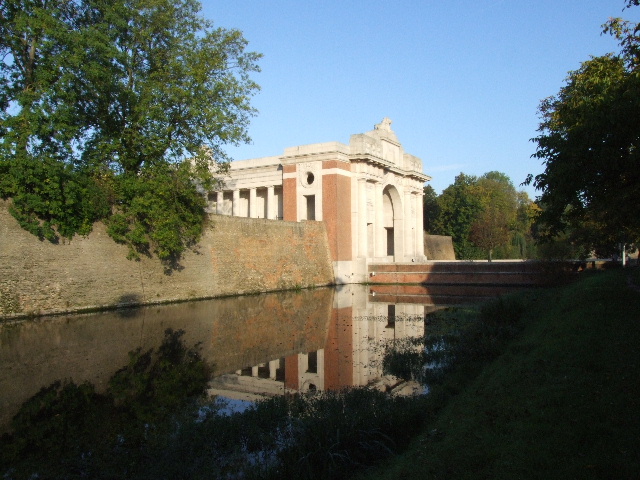Name
Ernest Crego New
30 April 1896
Conflict
First World War
Date of Death / Age
09/10/1917
21
Rank, Service Number & Service Details
Lieutenant
Australian Infantry, A.I.F.
17th Bn.
Awards: Service Medals/Honour Awards
British War and Victory medals
Cemetery/Memorial: Name/Reference/Country
YPRES (MENIN GATE) MEMORIAL
Panel 17
Belgium
Headstone Inscription
N/A
UK & Other Memorials
Digswell House Australian Hospital Memorial, St John's Church, Digswell
Pre War
Ernest Crego New was born on 30 April 1896 in Annandale, Sydney, New South Wales, the only son of Ernest and Charlotte New.
He was educated at Fort Street Boys' High School, Sydney, New South Wales and passed the Junior Examination for Sydney University at the age of 14 and matriculated with honours when only 16. He lived with his parents at Austerlitz, Forest Street, Haberfield, Sydney.
Wartime Service
He had held a commission with 'E' Coy Senior Cadet Trainees, Five Dock, and later with the 31st Infantry Regiment (St George's Rifles) Citizen Military Forces as a Lieutenant. He enlisted in August/September 1915 as a Lieutenant with the 17th Battalion, 7th Reinforcement. His unit embarked from Sydney on HMAT A29 Suevic on 20 December 1915. He saw service in Egypt and was admitted to the 3rd Australian Hospital, Abbassia, Egypt, twice in April and May 1916, eventually diagnosed with pneumonia on 6 May and transferred to Ras-el-tin Convalescent Depot on 20 May 1916. He was later sent to England in June for convalescence and proceeded overseas to France on 7 November 1916, joining the 17th Battalion on 14 November 1916.
He was wounded in action on 19 November 1916 with a gun shot wound to his right forearm, admitted to the 2nd General Hospital in Le Havre and transferred to England, being admitted to the 3rd London General Hospital and then to the 5th Auxiliary Hospital on 30 December 1916 (Digswell House). He was discharged on 1 February 1917 to No. 1 Command Depot, Perham Downs as Adjutant.
He was then promoted to 1st Lieutenant and "after tremendous efforts on his part" re-joined the 17th Battalion in France in June 1917, however, he was admitted to the 5th Australian Field Ambulance on 12 September 1917 and sent to 7th General Hospital, St Omer with Renal Calculus (kidney stone) being discharged to duty and re-joining his Battalion on 21 September 1917.
He was killed in action in the attack on Passchendaele, Belgium on 9 October 1917, age 21. He has no known grave and his name is commemorated on the Menin Gate Memorial at Ypres, Belgium.
Acknowledgments
Brenda Palmer
aif.adfa.edu.au



